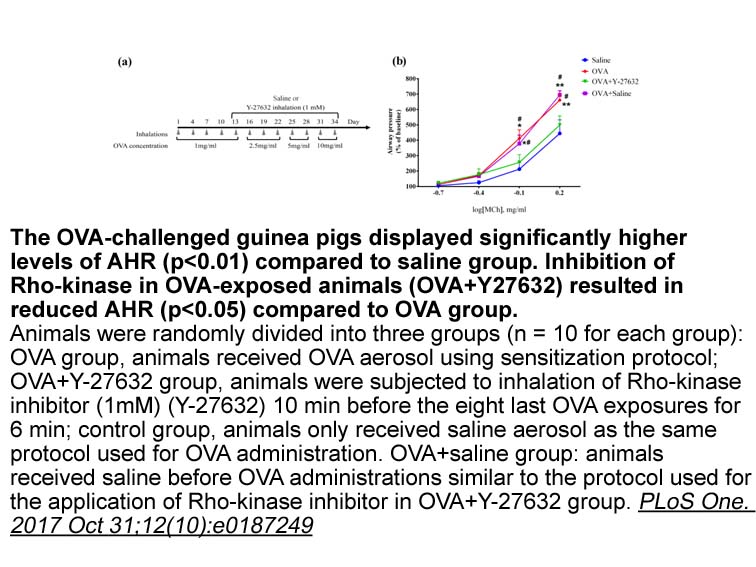Archives
Linifanib Two parallel branches of the DNA damage
Two parallel branches of the DNA damage-dependent S-phase checkpoint are thought to co-operate by inhibiting distinct steps of DNA replication. One branch includes the phosphorylation of structural maintenance of chromosomes 1 (SMC1), a cohesin that is activated by ATM or ATR after IR treatment or replication fork stress, respectively [26], [27], [28], [29]. The second branch consists of the ATR-Chk1- or ATM-Chk2-controlled maintenance of CDC25A turnover, culminating in controlling the phosphorylation status of Cdk2 and consequently the initiation of replication [30]. An additional protein that is required for the induction of the S-phase checkpoint is Rad17. This protein loads the Rad9-Hus1-Rad1 protein clamp onto chromatin and thus facilitates the ATR-mediated phosphorylation of Chk1 after UV-induced DNA damage [31], [32], [33]. Rad17 is itself phosphorylated by ATR and has also been reported to be activated by a pathway that requires ATM [34].
Material and methods
Results
Discussion
BER is involved in the repair of SSBs and modified bases such as N-methylated guanine and Linifanib formed after exposure of DNA to the monofunctional methylating agent MMS. Human cancer cells and mouse fibroblasts with defects in the BER pathway are hypersensitive to cell killing by MMS and they are characterized by an S-phase cell cycle arrest after such DNA damage [5], [10], [15]. This is in sharp contrast to BER-proficient cells, which do not show this extended S-phase delay but arrest only at the G2/M stage of the cell cycle to allow repair of the DNA damage. The molecular basis underlying this damage response in the absence of BER remains elusive. The results obtained in this study using a combination of RNAi modulation of XRCC1 and ATR, ATM specific kinase inhibitors and cell lines carrying mutations in the ATM and ATR genes suggest that both the ATR and ATM proteins are necessary to activate this S-phase checkpoint.
A few reports have addressed by what lesions and through which pathways both kinases could be activated after DNA damage and it seems clear that the chemical structure of the damage plays a role in determining which signalling cascade is activated [41]. A clear dependency on both ATR and ATM in inducing an S-phase delay has also been observed in human fibroblasts treated with thymidine, which slows progression of replication forks by depletion of intracellular dCTP pools [26]. The stalling of the replication forks was suggested to be the trigger for ATR activation whilst as no DSBs were detected in these cells, the authors speculated that DNA structures presenting double-stranded DNA ends such as the “chicken-feet” observed in yeast may be generated at stalled replication forks and activate ATM. Conversely, evidence from BER-defective PARP-1-inhibited cells suggests that ATM is activated by DSBs formed after the collapse of replication forks at sites of spontaneously induced SSBs [42]. This is in line with a lot of evidence [43], [44], [45], which infers that MMS-induced damage is converted to DSBs during replication. Therefore, whether ATM is activated by chicken-feet structures, the formation of DSBs arising from SSBs at collapsed replication fo rks or by ATR after replication fork stalling as observed after UV treatment remains to be established. The finding of MMS-induced activation of ATR in XRCC1-deficient cells was not surprising as, for example, apurinic sites, which are intermediates of the BER pathway result in stalled replication forks and the consequent recruitment of ATR to these sites [46]. It is noteworthy in this context that the ATR-recruiting protein RPA has been found to be a component of the BER complex [47], [48], [49]. Moreover, XRCC1 together with a functional BER complex has recently been found to be associated with DNA replication and cell cycle regulatory proteins [50], suggesting the presence of the BER machinery and checkpoint control factors at replication forks. As XRCC1 is thought to coordinate the assembly of the BER complex, these results point towards a role for XRCC1 in the early response to DNA damage and checkpoint signalling at replication forks.
rks or by ATR after replication fork stalling as observed after UV treatment remains to be established. The finding of MMS-induced activation of ATR in XRCC1-deficient cells was not surprising as, for example, apurinic sites, which are intermediates of the BER pathway result in stalled replication forks and the consequent recruitment of ATR to these sites [46]. It is noteworthy in this context that the ATR-recruiting protein RPA has been found to be a component of the BER complex [47], [48], [49]. Moreover, XRCC1 together with a functional BER complex has recently been found to be associated with DNA replication and cell cycle regulatory proteins [50], suggesting the presence of the BER machinery and checkpoint control factors at replication forks. As XRCC1 is thought to coordinate the assembly of the BER complex, these results point towards a role for XRCC1 in the early response to DNA damage and checkpoint signalling at replication forks.